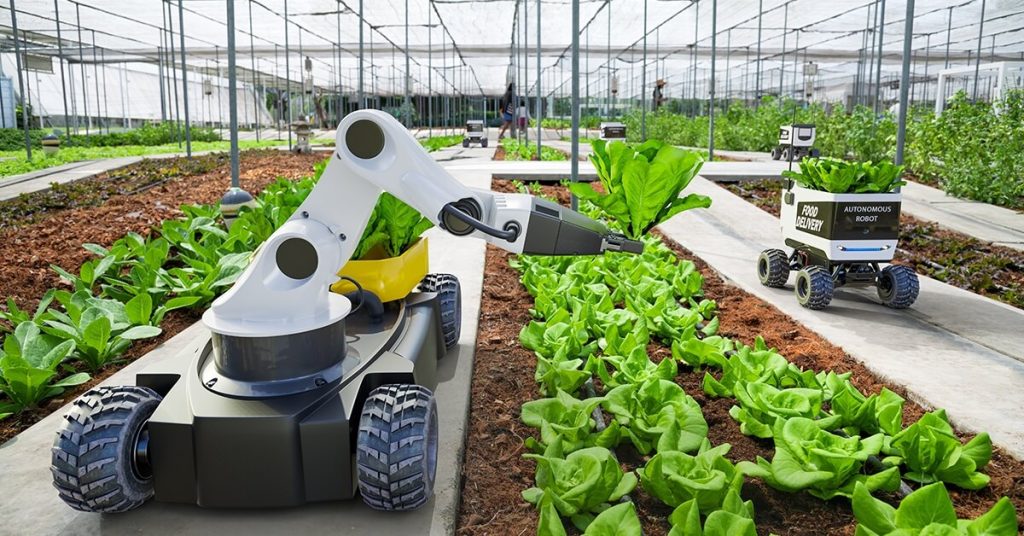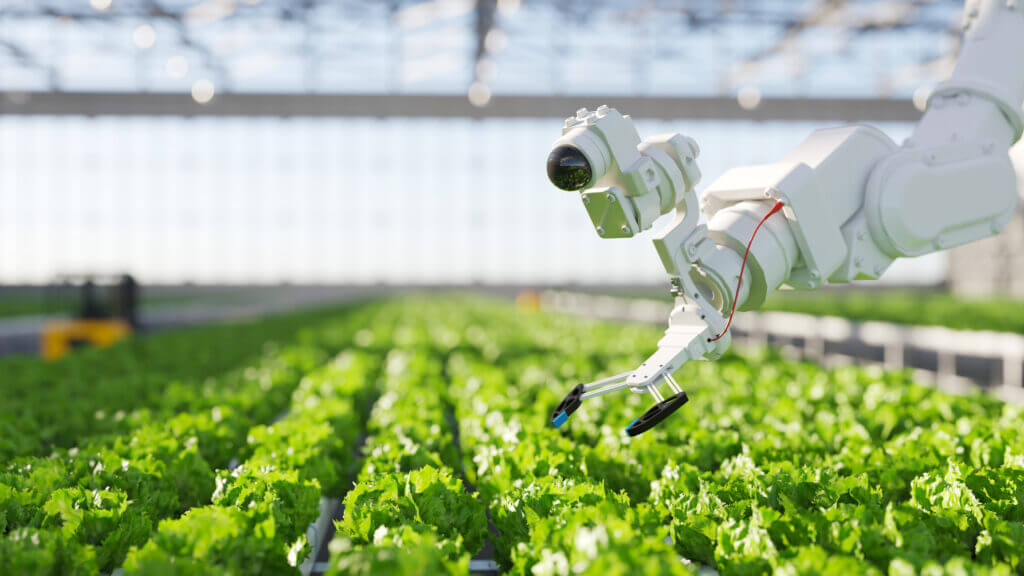n recent years, the rise of smart farming tools—from autonomous tractors to precision planting systems—has fundamentally reshaped the agricultural landscape. This article explores how the evolution of farm machinery and digital technology is empowering today’s farmers to do more with less: boosting efficiency, overcoming labor shortages, and making smarter, data-driven decisions. From the history of innovation to modern automation and future-focused strategies, we’ll walk you through the key trends, benefits, and practical steps for integrating agricultural technology into your own operation.
So, why does agricultural technology matter more than ever today? The answer is simple: because farming is changing faster than ever before. Pressures such as aging labor forces, rising input costs, and the need for greater sustainability are forcing farms—large and small—to rethink their methods. Embracing agricultural automation, GPS-guided equipment, and smart irrigation systems isn’t just about modernization—it’s about staying competitive, resilient, and ready for the next generation of challenges.
Whether you’re running a family-owned farm or managing a larger agribusiness, understanding how to leverage ag tech could mean the difference between struggling and thriving. Curious about how robotic farm machinery, precision seeding, and IoT-connected implements can help you get ahead? Please join me in understanding how the right investments today can shape a more efficient and profitable future.
Contents
- 1 A Century of Change, A Decade of Acceleration
- 2 Modern Challenges Demand Modern Tools
- 3 Bridging the Gap Between Interest and Implementation
- 4 Automation Isn’t About Replacing People—It’s About Supporting Them
- 5 Why Planning Matters More Than the Technology Itself
- 6 Looking Ahead: What’s on the Horizon for Ag Tech
- 7 Practical Next Steps for Farmers
- 8 Conclusion: Tech Should Serve Your Vision—Not Replace It
A Century of Change, A Decade of Acceleration
Farming has always evolved hand-in-hand with technology. From the earliest days of ox-drawn plows to the rise of GPS-guided tractors, each new innovation has shifted the boundaries of what’s possible in the field. For centuries, that change was slow and predictable. But in the last few decades, things have accelerated rapidly—and the pace continues to quicken.
What began with mechanical power and rural electrification has grown into a digital revolution. Tractors once controlled entirely by muscle and mechanics are now equipped with sensors, auto-steer systems, and internet connectivity. Where farmers once wrote yield notes on paper, they now analyze live drone footage and AI-powered forecasting tools from a smartphone.
This transformation isn’t just technological—it’s cultural. Agriculture is no longer only about hard work and heritage. It’s about strategic data use, intelligent automation, and long-term sustainability. And increasingly, it’s about equipping farmers to work smarter, not just harder.
Modern Challenges Demand Modern Tools
The push for technology isn’t driven by novelty—it’s driven by need. Across the U.S. and around the world, farms face an uncomfortable mix of constraints: labor shortages, aging populations, supply chain stress, and rising operating costs. Simply put, many traditional farm models are struggling to keep up.
Fewer hands are available to manage more tasks. Immigration uncertainties and rural depopulation have left operations without the seasonal or skilled labor they once depended on. Meanwhile, the demands on farmers have grown—precision planting, environmental reporting, animal welfare tracking, and climate adaptation now all fall on the same shoulders.
Ag technology offers a way forward. From robotic weeders to fully automated milking parlors, today’s machines don’t just do the heavy lifting—they collect data, improve safety, reduce waste, and even make it easier to train the next generation of farm workers. The key is understanding how to adopt tech without being overwhelmed.

Bridging the Gap Between Interest and Implementation
Despite the potential, many farmers hesitate when it comes to adopting new technologies—and rightfully so. The options are vast, the investments are significant, and the wrong choice can lead to frustrating outcomes.
Questions crop up immediately:
Where do I start?
What’s the real ROI?
Can I trust the technology to work reliably?
Will my team be able to use it effectively?
It’s easy to feel lost in a sea of buzzwords and sales pitches. That’s why a clear, step-by-step approach is crucial. Rather than trying to modernize everything at once, successful farms are identifying specific problems—labor gaps, inconsistent yield, inefficient feeding systems—and targeting technologies that solve them directly. Whether it’s a moisture sensor that prevents over-irrigation or a feed pusher that automates repetitive tasks, the most valuable tech often addresses a single, nagging issue that’s been dragging operations down for years.
Automation Isn’t About Replacing People—It’s About Supporting Them
One of the biggest misconceptions about agricultural automation is that it removes the human element from farming. In reality, it does the opposite. By taking over the most repetitive, time-consuming, and physically demanding tasks, technology allows farmers and workers to focus on management, oversight, and strategic decisions.
For example, robotic milking systems don’t just reduce labor—they also collect real-time data on milk volume, udder health, and cow behavior. That information empowers farmers to spot issues early, improve herd management, and even tailor feed rations. It’s not about doing less—it’s about doing better, faster, and with more insight.
In this way, automation isn’t a replacement for human judgment. It’s a tool that extends a farmer’s reach, helping one person accomplish what used to require a team—and with more accuracy, too.

Why Planning Matters More Than the Technology Itself
Before making any ag tech investment, planning is everything. The most expensive mistake a farmer can make is buying the right tool for the wrong job. That’s why this article series is designed not just to showcase available technologies, but to help producers build an actionable framework for adoption.
This includes:
Assessing your operation’s true needs and pain points.
Understanding how to evaluate cost vs. value over time—not just in the first season.
Involving your workforce early and providing training resources.
Building partnerships with trusted equipment suppliers and ag tech experts.
Keeping digital records to track improvements, not just assume them.
Remember: the goal isn’t to have the flashiest machinery. It’s to make your farm more resilient, efficient, and future-ready.
Looking Ahead: What’s on the Horizon for Ag Tech

As we move deeper into the 2020s, agricultural technology is poised to enter a new phase. Artificial intelligence, autonomous fleets, drone seeding, blockchain-enabled traceability, and regenerative automation will all play a role in shaping the farms of tomorrow. But even the most advanced tools won’t make a difference unless they’re grounded in real operational benefits.
Future-proofing your farm means staying open to new methods while remaining rooted in the fundamentals: soil health, crop management, animal welfare, and strong business decisions. Technology is a multiplier. If your systems are already sound, the right tools will make them stronger. If they’re fragile, tech won’t be a fix—it’ll just expose the gaps.
Practical Next Steps for Farmers
Feeling inspired—but unsure where to start? Here are three low-risk, high-impact moves you can make right now:
Inventory Your Current Tech
List out everything—from GPS guidance to software apps to climate sensors—that you already use. Are you leveraging it fully? Could you integrate existing tools better before buying something new?
Start Small with High Visibility
Choose one problem area—maybe it’s erratic irrigation or inconsistent feeding—and explore affordable tech solutions that offer a clear return. Trial it on a single field or barn first.
Talk to Other Farmers
Local producers are often your best resource. What have they tried? What worked, and what didn’t? Learning from peers reduces risk and helps you build a support network around shared tools or suppliers.

Conclusion: Tech Should Serve Your Vision—Not Replace It
Agriculture is changing fast—but farmers don’t need to change everything all at once. The best technologies aren’t the flashiest. They’re the ones that solve your specific problems, support your people, and pay for themselves over time.
This series will dive deeper into labor solutions, financial strategies, data integration, and education tools designed to make tech adoption manageable and meaningful. Whether you’re exploring your first automation tool or planning a full smart-farm transition, our goal is to help you take the next step with clarity and confidence.
Because when technology and tradition work together, that’s when farming truly thrives,And if you’re considering upgrading your operation, MINNUO’s tailored farm machinery solutions offer reliability, performance, and expert support every step of the way. From cutting-edge threshing and drying systems to precision-compatible equipment, MINNUO helps you farm smarter—not harder.

